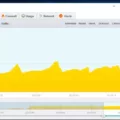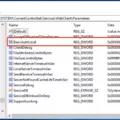Penetration testing is an important security practice used to protect web applications and networks from malicious attacks. As technology advances, automated penetration testing tools have emerged as a way to quickly and efficiently scan systems for vulnerabilities. Automated penetration testing can help organizations identify weaknesses in their systems before they are exploited.
Automated penetration testing is the process of using automated tools to scan a system for potential vulnerabilities. These tools are designed to detect system weaknesses, including software misconfigurations, network configuration issues, weak passwords, and other security threats. Automated pen tests can also assess the effectiveness of existing security controls in place and make recommendations for improvement. This type of testing is often preferred by security professionals due to its ability to provide more detailed results than manual tests without sacrificing accuracy or speed.
A key advantage of automated penetration testing is its efficiency and cost-effectiveness when compared to traditional manual approaches. Automated pen tests can be used to quickly scan systems for potential vulnerabilities and uncover hidden risks that may otherwise go undetected. Additionally, automated pen tests are easier to set up than manual ones, which can be time-consuming and complex processes. Furthermore, since automated pen tests require fewer resources than manual ones, they can be used on a much larger scale with greater coverage across an organization’s IT infrastructure.
In order for automated penetration testing tools to be effective, it is important that organizations understand the types of attacks they are looking for and how best to utilize the tools available. For instance, vulnerability scanners are designed to identify common web application security flaws such as SQL injection or cross-site scripting (XSS). On the other hand, dynamic application security testing (DAST) tools focus on identifying potential flaws within an application’s code rather than its configuration settings or external dependencies. Organizations should also have a clear understanding of their IT infrastructure in order to get the most out of their automated pen tests; otherwise, they may miss opportunities or overlook certain risks altogether.
Overall, automated penetration testing provides organizations with an efficient way to detect system vulnerabilities before they can be exploited by malicious actors. When paired with manual approaches such as source code analysis or dynamic application security testing (DAST), it can provide comprehensive coverage across an organization’s network infrastructure and help ensure that all potential threats have been identified and addressed in a timely manner.

Are DAST and Pentest the Same?
No, DAST and Penetration Testing (Pentest) are not the same. DAST is a form of security testing that evaluates the security of an application while it is running in its environment. This type of testing involves simulating real-world attacks and analyzing how the application responds to them. Pentest, on the other hand, assesses an application’s security in a static state, usually by inspecting its code or architecture. While both forms of testing are used to evaluate an application’s security posture, they each approach it from different angles and may yield different results.
Automated Vulnerability Testing: An Overview
Automated vulnerability testing is a process of using specialized software to identify security weaknesses in web applications. It is often conducted as part of a larger security assessment, and it helps organizations identify potential threats and vulnerabilities before they can be exploited. Automated tools search for common security issues such as cross-site scripting (XSS), SQL injection, cross-site request forgery (CSRF), and other vulnerabilities that can lead to data breaches or malicious attacks. By detecting these weaknesses early on, organizations can take steps to fix them before attackers have the opportunity to exploit them.
Is Python Sufficient for Penetration Testing?
No, Python is not enough for penetration testing. Although it can be a powerful tool to use as part of a larger pentesting strategy, it is not comprehensive enough on its own. By itself, Python may be able to help with some aspects of security testing such as network and endpoint scanning, but it cannot provide a complete picture of the risks and vulnerabilities present in any given system. To gain the full benefits of penetration testing, it is recommended that other tools and techniques such as manual inspection, vulnerability scanning, and social engineering also be utilized in conjunction with Python scripting. This combination will give pen-testers the most comprehensive view of the system’s security posture.

Source: exelatech.com
Which Type of Penetration Testing is Most Effective?
It is difficult to definitively answer which penetration testing tool is the best, as different tools are better suited for different purposes. Some of the most popular and widely used penetration testing tools include Aircrack-ng, Burp Suite, Cain and Abel, CANVAS by Immunity, John the Ripper, Kali Linux, Metasploit, and SQLmap.
Aircrack-ng is a standard, well-known tool used to assess, dissect and crack wireless networks. It works by capturing packets before attempting to decrypt them using tools such as WEP or WPA cracking algorithms. It also includes packet sniffing capabilities and can be used to audit wireless networks.
Burp Suite is a comprehensive suite of web application security assessment tools that cover both static and dynamic analysis. It allows users to intercept requests and responses between a web browser and a web server in order to analyze them for vulnerabilities. Additionally, it features an extensive set of automated scanning capabilities that can be used for security testing purposes.
Cain & Abel is a Windows-based password recovery tool that assists users in recovering passwords from various sources such as network protocols or encrypted files. It can also be used for password cracking on local systems or remote computers over a network connection.
CANVAS by Immunity provides powerful exploitation capabilities with its vast library of exploits covering multiple operating systems, applications, and services. It includes an intuitive graphical user interface (GUI) that simplifies the process of creating custom exploit payloads as well as analyzing vulnerable targets on the network.
John the Ripper is an open-source password-cracking tool primarily used for identifying weak passwords on local systems or remote hosts over a network connection. It supports multiple hashing algorithms including MD5, SHA1, and NTLM hashes making it suitable for use in many scenarios where passwords need to be recovered or verified quickly and efficiently.
Kali Linux is a Debian-based Linux distribution designed specifically for penetration testing purposes with its large collection of open-source security testing tools preinstalled out of the box such as Aircrack-ng, Metasploit Framework, Nmap, etc., making it an ideal choice for those who want to quickly get up and running with their security assessments without having to install any additional packages manually beforehand.
Metasploit allows users to quickly identify vulnerabilities within their IT infrastructure by exploiting them with prebuilt exploit payloads or crafting custom ones from scratch using its integrated scripting engine as well as debugging capabilities that assist in uncovering difficult vulnerabilities within software applications or services running on target machines remotely over a network connection.
SQLmap is an automated penetration testing tool designed specifically for SQL injection attacks which allows users to easily identify vulnerable databases and then exploit them using malicious SQL statements crafted from within its user interface (UI). Its ability to detect common web application flaws makes it one of the most popular choices among experienced security professionals today when it comes to finding exploitable areas within web applications quickly without requiring manual intervention through tedious trial-and-error approaches typically associated with manual vulnerability assessments conducted via web browser alone manually without any automated assistance whatsoever.
there isn’t one single “best” penetration testing tool since each has its own strengths depending on what the user’s goals are when performing these types of assessments so it’s important for individuals to select their own set based upon their own specific requirements rather than relying solely upon someone else’s opinion about which one is “best” overall since this may not always align with what they actually need themselves in order carry out successful security tests within their own environment effectively in 2022!
Conclusion
In conclusion, automated penetration testing can be a powerful tool to identify and mitigate security vulnerabilities in web applications. It has the potential to reduce costly losses of sensitive information, while also helping to keep hackers and cybercriminals at bay. However, this type of testing should be carefully considered before implementation, and organizations should ensure that it is an ethical and reliable tactic for their needs. With the right processes in place, automated penetration testing can help to improve overall security and protect against potential threats.








